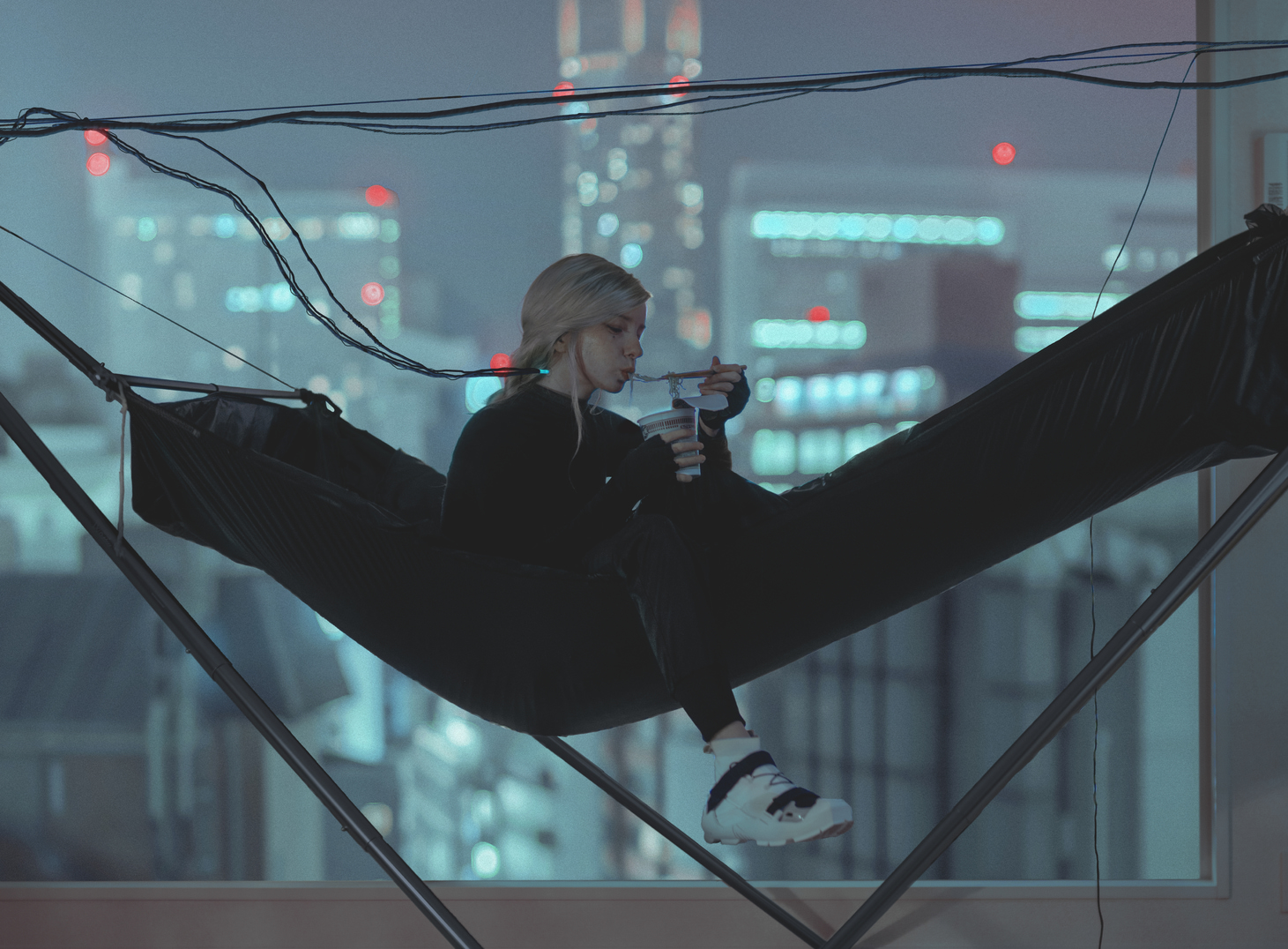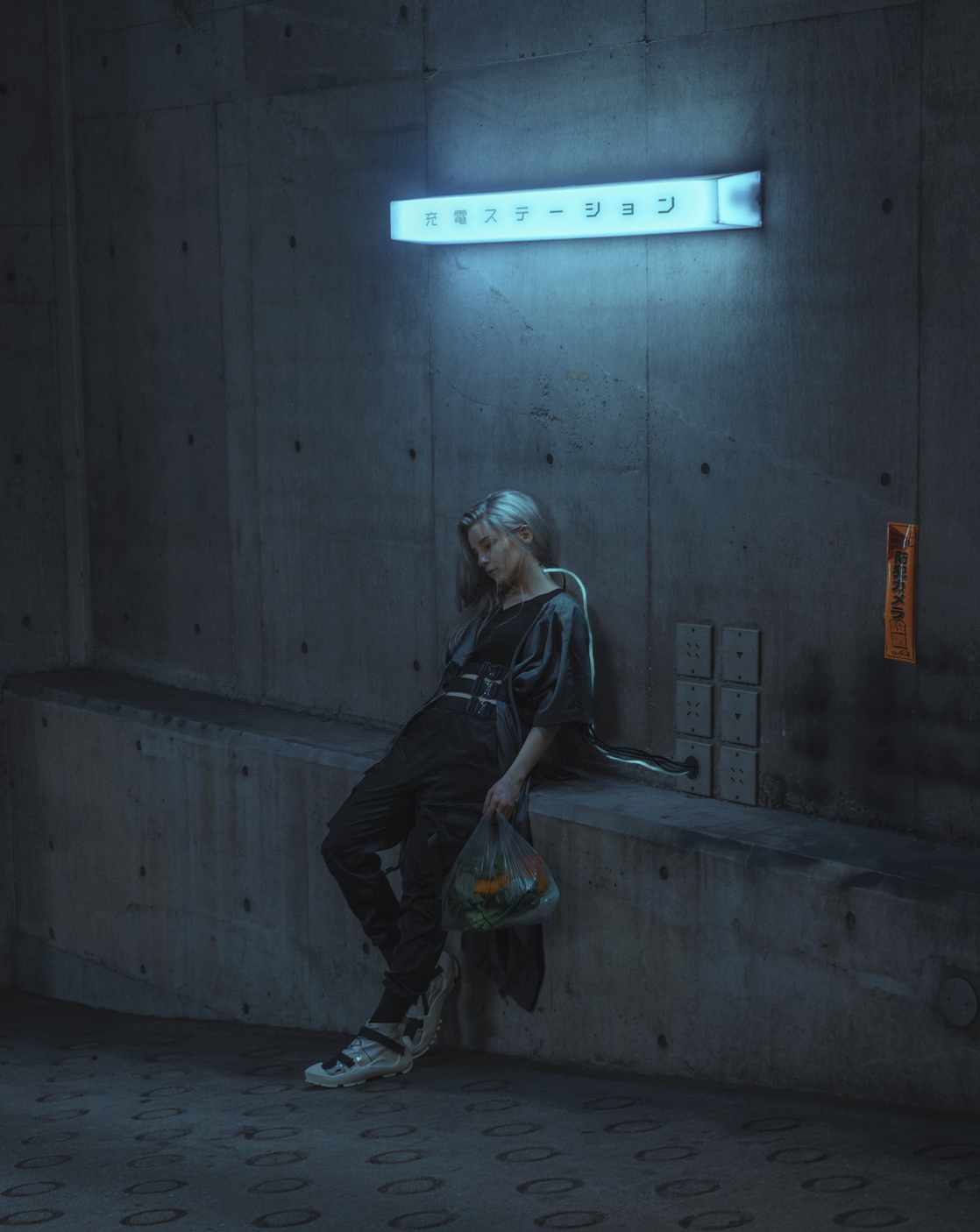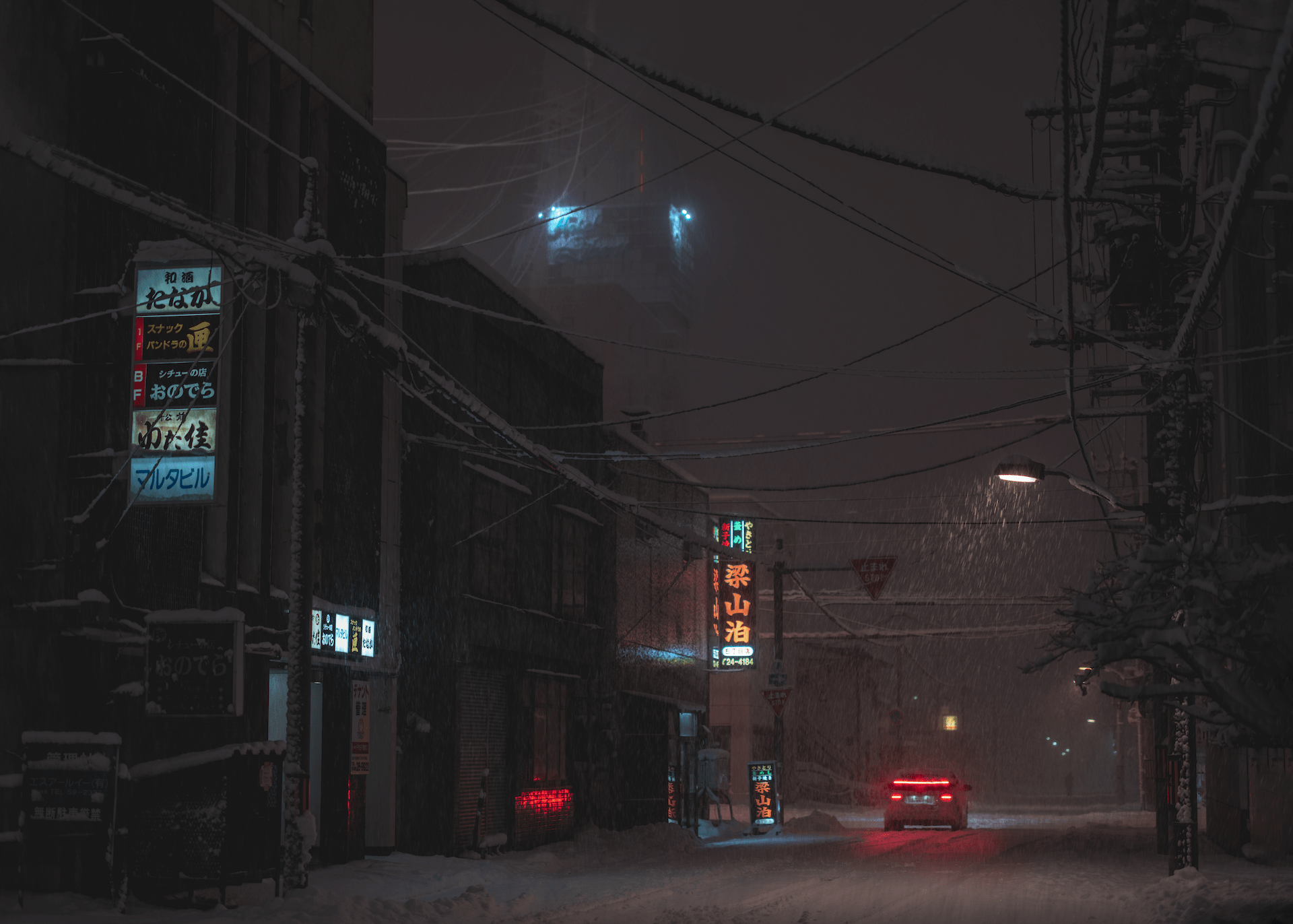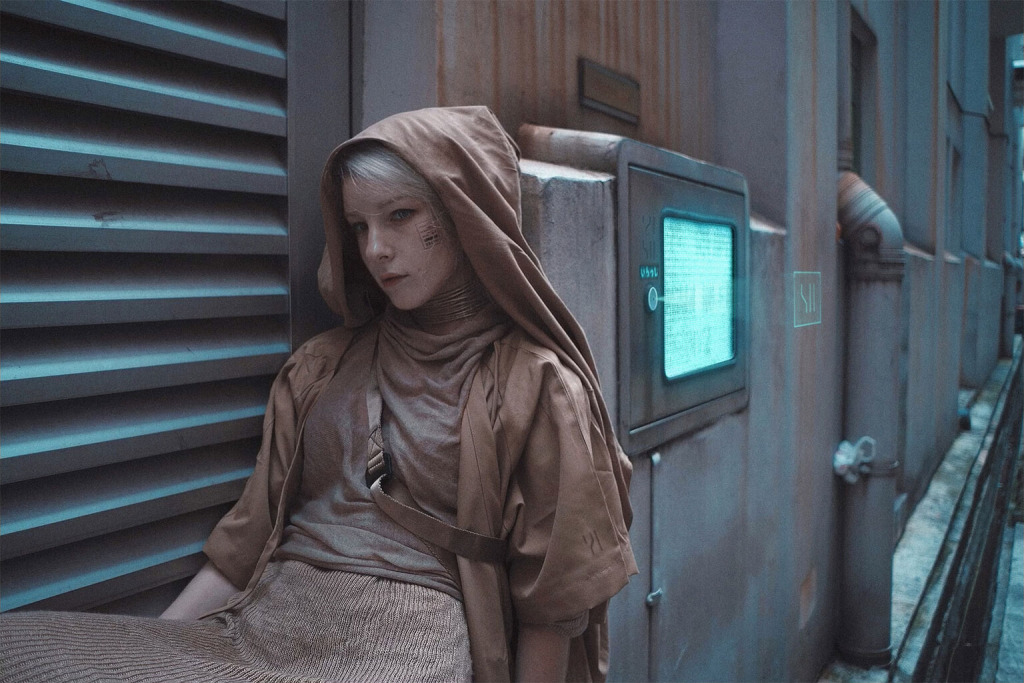The future is now. It always is. The entirety of Tokyo is blinking behind me while I’m talking online to a part-time cyborg and a micro sci-fi world builder. This is how Nina Geometrieva and Damjan Cvetkov Dimitrov introduce themselves. The creative duo behind the acclaimed Geometrieva Instagram account, which depicts a cyborg living her best daily life, assure me they’re just boring robots.
“We are so predictable. We like matte black things and snow,” Geometrieva says. “We are robots with simple code,” Dimitrov adds. “We could be replaced by rudimentary machine learning.”
The would-be-robots are all too humble. Geometrieva is an award-winning designer at Google and an NFT artist, while Dimitrov is an independent game designer and photographer with an enviably diverse skill set. And they both have particularly vivid imaginations. In her NFT series V – A – S – T, Geometrieva designs extreme worlds that the immortal Cyan visits trying to end her life. And in his new microworlds Instagram account, Dimitrov writes of a suspended dormant explosion in the sky transforming into a tourist attraction.
Combining fashion, photography, design and storytelling, the couple create a simulacrum that they want people to inhabit, called simply Geometrieva.

Blurring the Edges of Reality.jpg
Cyborg Geometrieva talks directly to her Instagram followers, lamenting the lack of battery or describing the taste of antifreeze cup ramen. The duo behind the account let the work speak for itself and invite people to imagine the rest. It should feel believable, possible, plausible. “I am an experiment, but I do have human parents,” the Geometrieva currently speaking from my laptop screen and into my earphones tells me. The “I” of the creator and the “I” of the creation melting into each other like soldering metal.
Tweaking reality ever so slightly is a key characteristic of Geometrieva and Dimitrov’s work. “I call it subtle sci-fi,” explains the latter. “Instead of planet exploration, there is this world but just a little bit different.” Their first viral collaboration was an essay about staying in Nakagin Capsule Tower in 2015 and it was subtle sci-fi that no one could put their finger on. The capsule apartments in the tower moved like parts of a Rubik’s cube. A detail that many believed and that left even the most hardened Tokyoites second-guessing what they knew about Nakagin. It was pure imagination or even, perhaps, a deep-seated longing for it to be true.
“Real is not important when you create worlds,” Dimitrov says firmly. “You shouldn’t impose your reality when creating new ones.” I can see his point. The beauty of creation is to bring the imagined into existence. Whatever you create becomes real.

The Relatable Cyborg / [updating]
Cyborg Geo, the Instagram character’s nickname, loves going to 7-Eleven, eating noodles while recharging and taking walks in Tokyo. The creators of the account aim for the mundane and the vulnerable. “There’s only superior tech in stories. Let’s see what cyborgs can’t do,” they say. In the Instagram snapshots Geo glitches, needs a reboot, runs out of battery on the way to the supermarket and gets stuck inside a VR game. As if stills from a movie, these shots and micro stories capture moments and ask you to build the rest of the world in your own mind.
Immersion is the ideal, so the account engages with the followers in a “create your own adventure” style fashion. They often vote where Geometrieva should go next, influencing future artworks. Some fans continue the story in comments and create fan art.

Malfunctions and Fixes.exe
Geometrieva and Dimitrov, themselves, ran into creative production glitches when they moved to rural Hokkaido in 2020. The account was started in Singapore and blossomed in Tokyo thanks to its distinctive architecture and grimy backstreets riddled with vending machines and AC units. There was none of that in the countryside.
Constraint, however, drives creativity and the couple managed to return to their imaginative roots. A cable becomes a belt, dad’s old Yugoslav memorabilia is exhibited at a museum. The cyberpunk fashion outfit that made Geometrieva go viral was a Singaporean hospital gown. Now, fields and forests in Hokkaido became vast interstellar spaces where Geometrieva was teleported to mine crypto. And she did, creating non-fungible tokens (NFTs) in the process that were beamed up on New York’s Time Square during the NFT NYC conference. The Geometriva X Anticipateants (Dimitrov’s online moniker) NFT was part of a grand global NFT exhibition by Crypto Art Fair.

Forever Outside the Box
Geometrieva and Dimitrov are hard to define. They admit that themselves. “When you’re doing something new it’s very hard to fit a genre,” they tell me. They struggle to push through the internet feudalism of subreddits and Facebook groups that don’t know how to sort cyborg stories. They are at the intersection of several mediums, outside of all orthodox boxes. And they want to add more elements if technically possible, such as 3D, 360 photography, video and so on. Most of all, they want to stay connected with followers.
From their native Macedonia in Europe, to Singapore and Tokyo, to a move to the US in 2022, Geometrieva and Dimitrov are also used to impermanence. “In the last seven years we have had only two spoons,” they say while laughing. But forced minimalism and international living has been constantly inspiring them. They are both proud autodidacts and fearless. Geometrieva is switching jobs to work for Instagram, the very platform where the cyborg Geometrieva lives. Whatever was unreal until this point might very well become a reality.
We quickly say goodbye before my laptop battery dies and the screen blackens to reflect my face. Did I just speak to people who say they are robots, or cyborgs who say they are people? I turn to look at the Tokyo cityscape behind me, the one that Geometrieva and Dimitrov just joked might be a green screen backdrop for all they know. The one that the cyborg Geometrieva forever inhabits through art. “Real is not important.”









